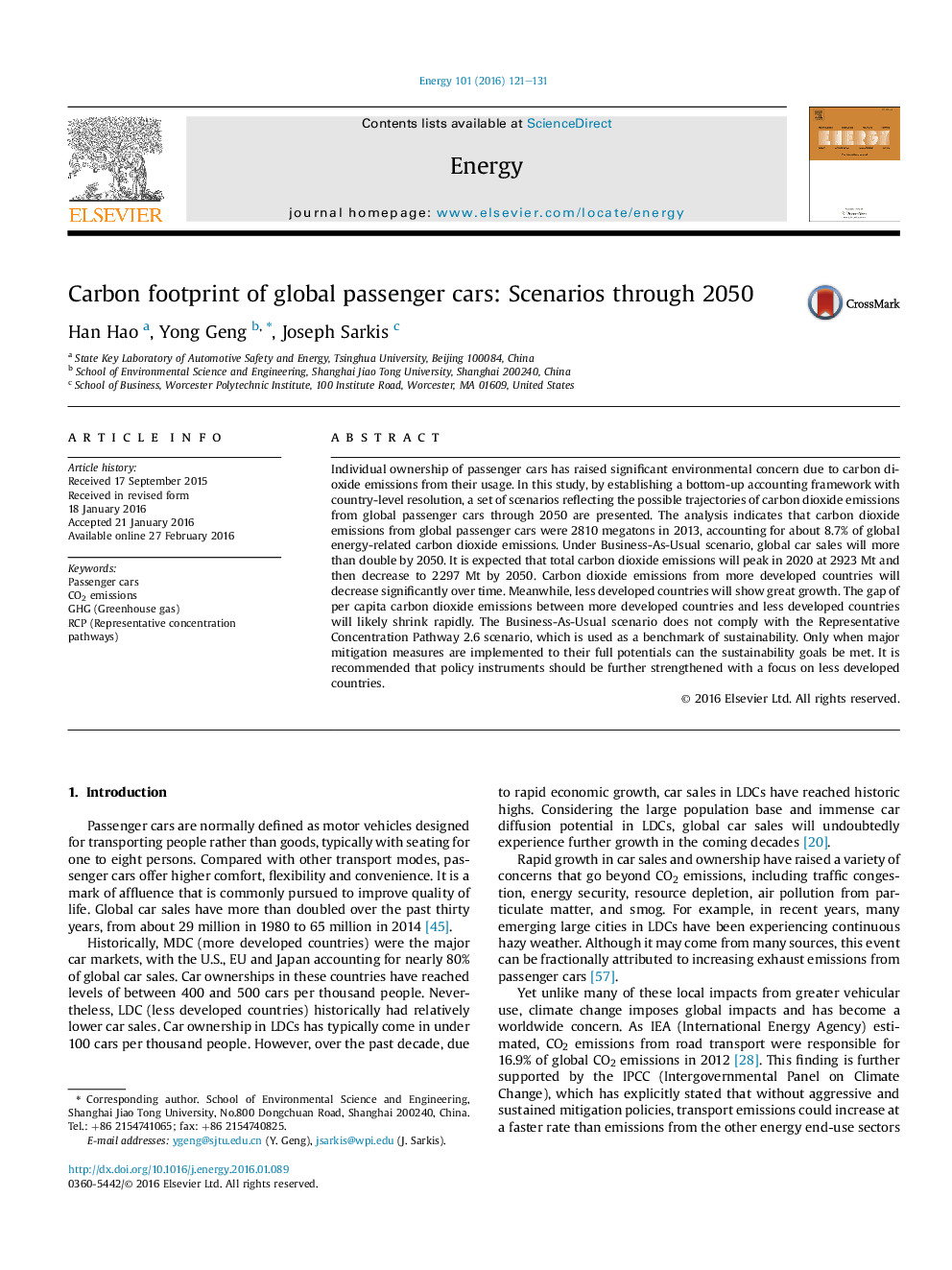| Article ID | Journal | Published Year | Pages | File Type |
|---|---|---|---|---|
| 1731017 | Energy | 2016 | 11 Pages |
•A bottom-up accounting framework of carbon dioxide emissions from global passenger cars is established.•Carbon dioxide emissions from passenger cars can be observed on the national, regional and global levels.•Carbon dioxide emissions from passenger cars accounted for 8.7% of global energy-related carbon dioxide emissions in 2013.•A set of scenarios reflecting the possible trajectories of carbon dioxide emissions through 2050 are presented.•Bottom-up estimations are compared with top-down targets derived from the Representative Concentration Pathway scenarios.
Individual ownership of passenger cars has raised significant environmental concern due to carbon dioxide emissions from their usage. In this study, by establishing a bottom-up accounting framework with country-level resolution, a set of scenarios reflecting the possible trajectories of carbon dioxide emissions from global passenger cars through 2050 are presented. The analysis indicates that carbon dioxide emissions from global passenger cars were 2810 megatons in 2013, accounting for about 8.7% of global energy-related carbon dioxide emissions. Under Business-As-Usual scenario, global car sales will more than double by 2050. It is expected that total carbon dioxide emissions will peak in 2020 at 2923 Mt and then decrease to 2297 Mt by 2050. Carbon dioxide emissions from more developed countries will decrease significantly over time. Meanwhile, less developed countries will show great growth. The gap of per capita carbon dioxide emissions between more developed countries and less developed countries will likely shrink rapidly. The Business-As-Usual scenario does not comply with the Representative Concentration Pathway 2.6 scenario, which is used as a benchmark of sustainability. Only when major mitigation measures are implemented to their full potentials can the sustainability goals be met. It is recommended that policy instruments should be further strengthened with a focus on less developed countries.
